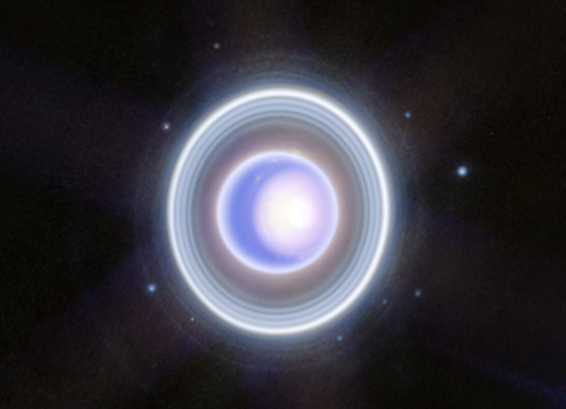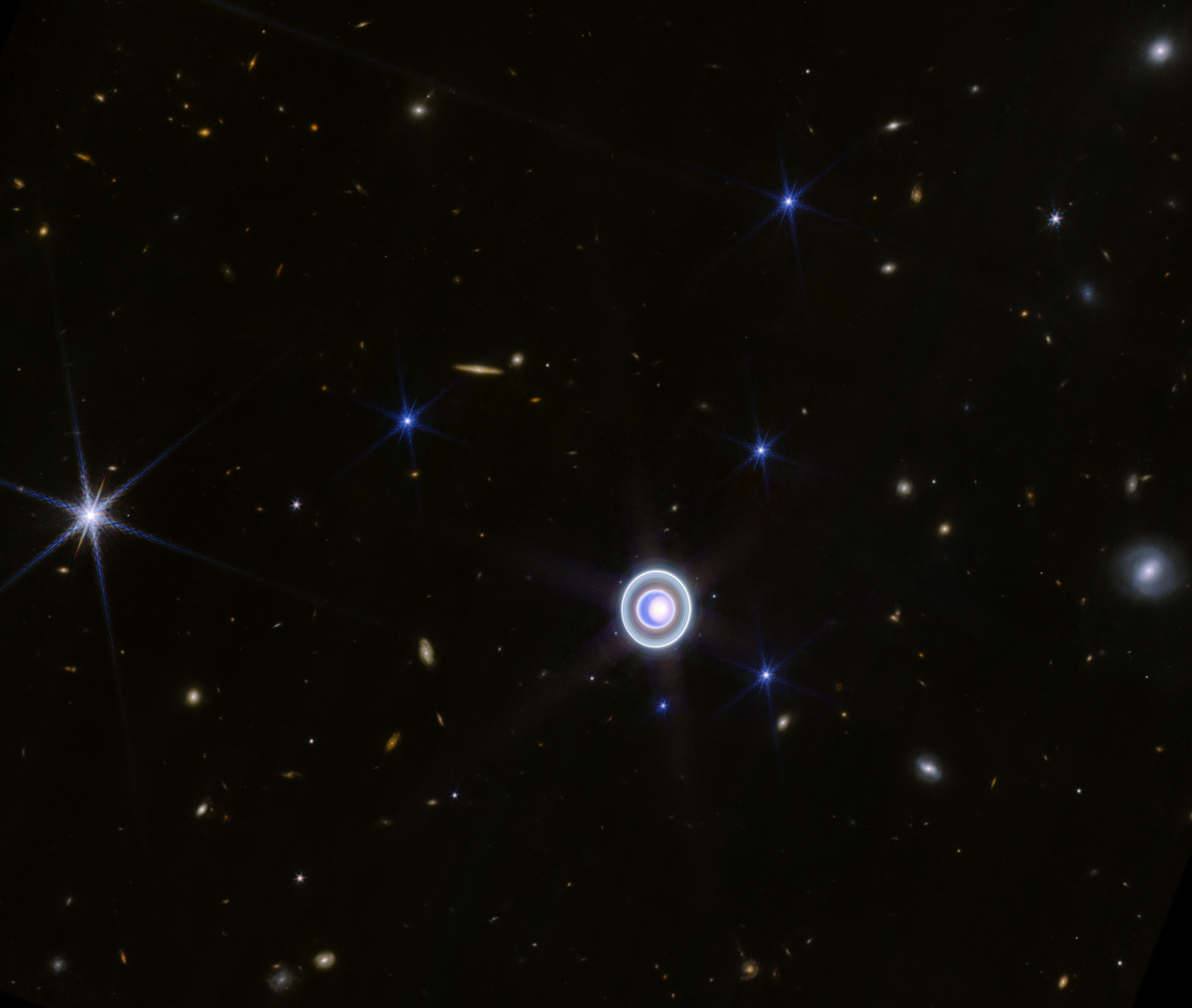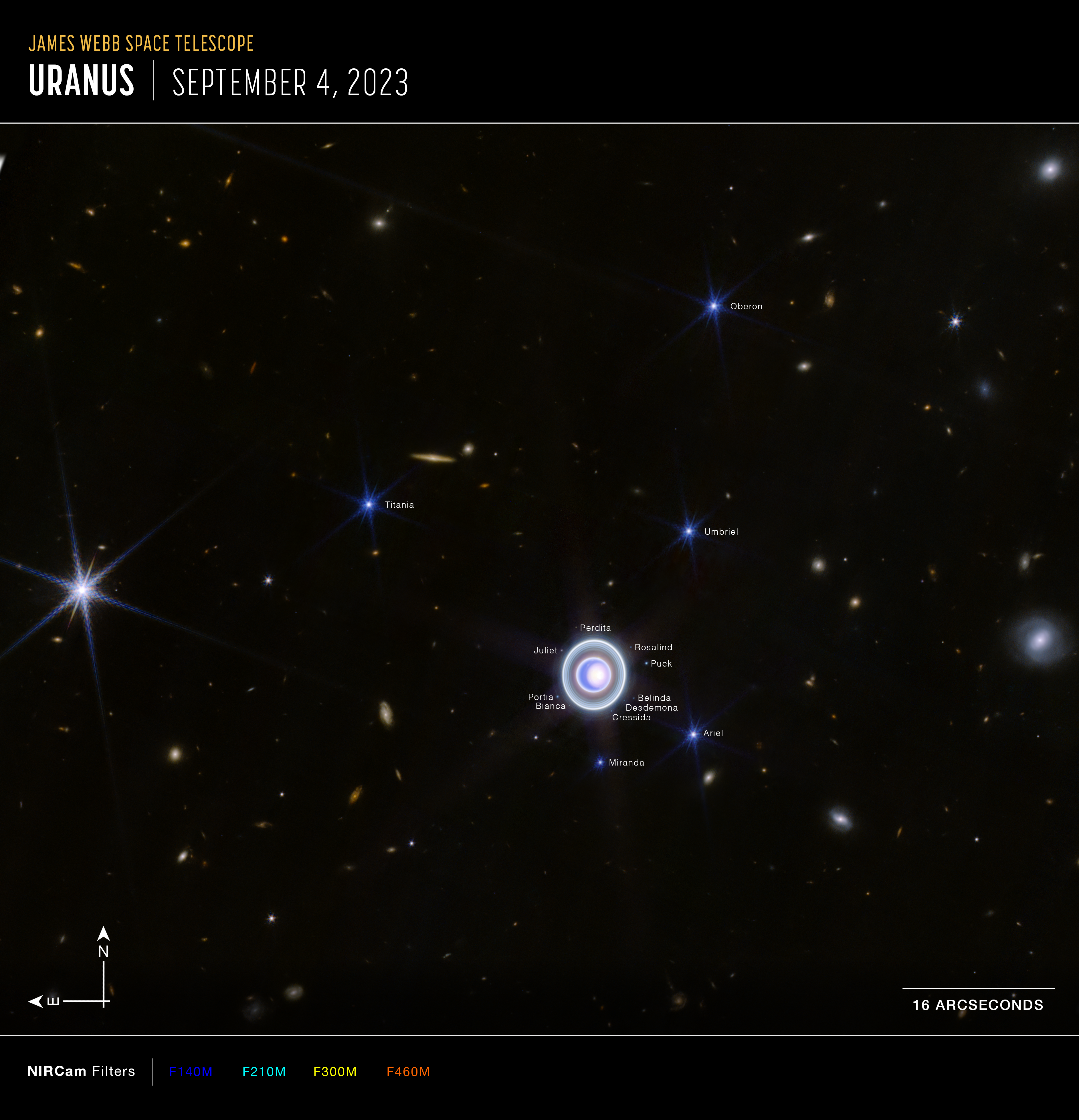1 min read
Uranus Close-up (NIRCam Image)

This image of Uranus from NIRCam (Near-Infrared Camera) on NASA's James Webb Space Telescope shows the planet and its rings in new clarity. The Webb image exquisitely captures Uranus’s seasonal north polar cap, including the bright, white, inner cap and the dark lane in the bottom of the polar cap. Uranus’ dim inner and outer rings are also visible in this image, including the elusive Zeta ring—the extremely faint and diffuse ring closest to the planet.
This Webb image also shows 9 of the planet’s 27 moons. They are the blue dots that surround the planet’s rings. Clockwise starting at 2 o’clock, they are: Rosalind, Puck, Belinda, Desdemona, Cressida, Bianca, Portia, Juliet, and Perdita. The orbits of these moons share the 98-degree tilt of their parent planet relative to the plane of the solar system.
One day on Uranus is about 17 hours, so the planet’s rotation is relatively quick. This makes it supremely difficult for observatories with a sharp eye like Webb to capture one simple image of the entire planet – storms and other atmospheric features, and the planet’s moons, move visibly within minutes. This image combines several longer and shorter exposures of this dynamic system to correct for those slight changes throughout the observing time.
About the Data
- Data DescriptionData DescriptionProposal: A description of the observations, their scientific justification, and the links to the data available in the science archive.
Science Team: The astronomers who planned the observations and analyzed the data. "PI" refers to the Principal Investigator.This image was created from JWST data from proposal: 2739 (K. Pontoppidan)
Image Processing: Alyssa Pagan, Macarena Garcia Marin (STScI)
- InstrumentInstrumentThe science instrument used to produce the data.NIRCam
- Exposure DatesExposure DatesThe date(s) that the telescope made its observations and the total exposure time.04 September 2023
- FiltersFiltersThe camera filters that were used in the science observations.F140M, F210M, F300M, F460M
- Object NameObject NameA name or catalog number that astronomers use to identify an astronomical object.Uranus
- Object DescriptionObject DescriptionThe type of astronomical object.Planet
- Release DateDecember 18, 2023
- Science ReleaseNASA’s Webb Rings in Holidays with Ringed Planet Uranus
- CreditImage: NASA, ESA, CSA, STScI

These images are a composite of separate exposures acquired by the James Webb Space Telescope using the NIRCam instrument. Several filters were used to sample medium wavelength ranges. The color results from assigning different hues (colors) to each monochromatic (grayscale) image associated with an individual filter. In this case, the assigned colors are: Blue: F140M, Cyan: F210M, Yellow: F300M, Orange: F460M

Related Images & Videos

Uranus Wide (NIRCam Image)
This image of Uranus from NIRCam (Near-Infrared Camera) on NASA’s James Webb Space Telescope shows the planet and its rings in new clarity. The planet’s seasonal north polar cap gleams in a bright white, and Webb’s exquisite sensitivity resolves Uranus’ dim inner and outer...

Uranus Wide (NIRCam Compass Image)
This image of Uranus, captured by Webb’s Near-Infrared Camera (NIRCam), shows compass arrows, scale bar, and color key for reference. The north and east compass arrows show the orientation of the image on the sky. Note that the relationship between north and east on the sky (as...
Share
Details
Laura Betz
NASA’s Goddard Space Flight Center
Greenbelt, Maryland
laura.e.betz@nasa.gov
NASA, ESA, CSA, STScI




























